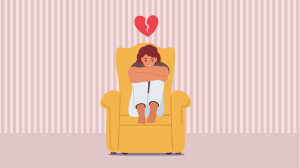Squats 101: Save Your Knees and Lower Back

Q: A trainer told me that you should never let your knees to go past your toes during squatting. I have a hard time keeping my knees from going forward when I squat. Is there something I can do?
The claim that your knees should never travel past your toes has been highly overstated by many in the fitness profession. Yes, on a general level it is true that forward translation of the knees does increase shear forces in the knee joint, with the magnitude of shear progressively increasing as your knees move forward past the plane of your toes. Given that shear forces are potentially damaging to the soft tissue structures in the knees, attempts should be made to avoid significant forward knee translation as you descend in the downward phase of the squat.
However, altering squatting technique to prevent your knees from going past your toes can have worse consequences. Studies have shown that when the knees are restricted from moving in their normal range of motion, the body tends to compensate by increasing forward lean. This dramatically increases forces about the hips and spine. The lumbar region in particular is placed in a disadvantageous position from a biomechanical standpoint, heightening the potential for a lower-back injury.
It’s also important to realize that there isn’t a “magic point” where knee forces suddenly go up exponentially the moment your knees break the plane of your toes. Rather, forces rise gradually, so the further your knees travel forward, the greater the stress on the joint.
The take-home message is that you should try to minimize forward translation of your knees when squatting, but not at the expense of increasing forward lean. It’s essential to keep your torso as perpendicular to the ground as possible, maintaining a rigid spine. To reduce forces at the knee joint, try sitting back into the squat during descent, and resist pushing your knees forward.
If you continue to have difficulty, try squatting against a wall with a stability ball wedged between the wall and your lower back. This allows you to position your feet further away from your body and helps to solidify technique that ultimately can facilitate the transition back into unassisted squatting.
Full Squats: Guide to Proper Form
http://www.fitnessrxwomen.com/training/perfect-form-with-jessie-h/lets-talk-full-squats/
Do 100 Squats a Day: No Equipment Needed
https://www.fitnessrxwomen.com/training/workout-tips-advice/100-squats-a-day/
Smarter Squats for Toned Glutes
https://www.fitnessrxwomen.com/training/workout-tips-advice/smarter-squats-for-toned-glutes/








